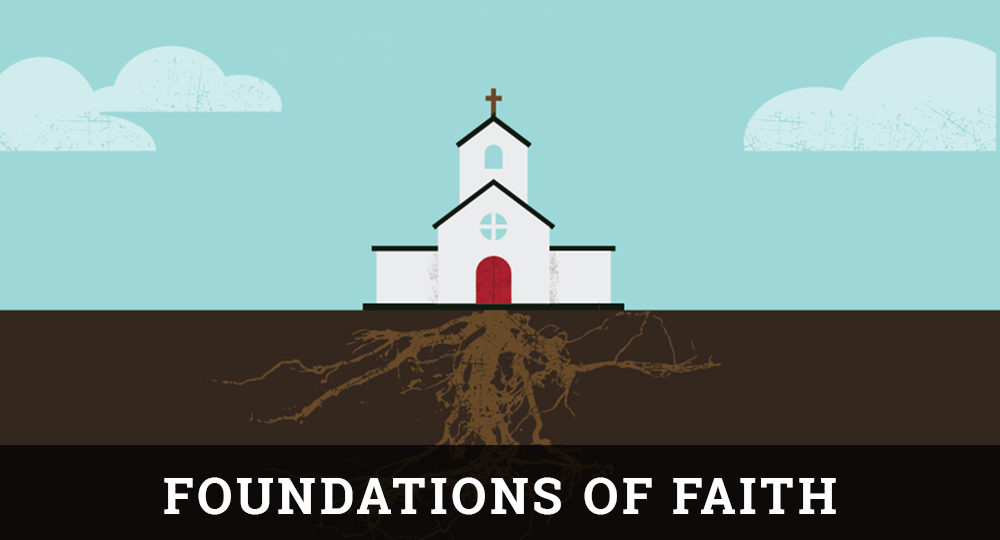The Love of God Part Three
God’s love is one of the great themes of the Bible. The previous articles on this theme focused attention on His love in the Old Testament. Now let’s begin to examine His love in the New Testament.
God’s Love in the New Testament
Two key words are associated with God’s love in the New Testament: agapao, which appears 266 times, and phileo, which appears 15 times.1
Language scholar Robert Trench explains the distinction in meaning between these two words as follows: agapao “expresses a more reasoning attachment, of choice and selection,” and continually implies “the notions of respect and reverence.”2 By contrast, phileo expresses what “is more instinctive, is more of the feelings or natural affections, implies more passion.”3
Object of God’s Love
The New Testament indicates that God has focused His love on several objects. This article explores one: God’s love for the world. No doubt the best known expression of God’s love is found in John 3:16: “For God so loved the world that He gave His only begotten Son, that whoever believes in Him should not perish but have everlasting life.”
The word translated “for” indicates that verse 16 continues the train of thought introduced in verses 14 and 15 and expresses its cause.4 Thus, in order to understand the significance of John 3:16, it is necessary to examine verses 14 and 15.
Verse 14 presents an analogy between something that happened to Israel in the wilderness and what would happen to the Son of Man: “And as Moses lifted up the serpent in the wilderness, even so must the Son of Man be lifted up.”
Because the Israelites spoke against God and Moses in the wilderness, “the Lᴏʀᴅ sent fiery serpents among the people, and they bit the people; and many of the people of Israel died” (Num. 21:6). This judgment caused people still living to repent of their sin, and they prompted Moses to pray for God to remove the serpents (v. 7). God instructed Moses to make a fiery serpent and set it on a pole, so the life of the bitten people would be spared if they looked at that uplifted serpent, and Moses did so (vv. 8–9).
Note that physical life was spared for the people who looked, not at one of the fiery serpents that inflicted death, but at a substitute representative that would not inflict death.
The verse 14 analogy indicates that, as Moses lifted up on a pole the substitute representative of the fiery serpents that caused physical death, “even so must the Son of Man be lifted up” (Jn. 3:14). The word translated “must” “expresses a necessity which lies in the very nature of God and which issues in the execution of His plans.”5 This definition indicates that, because of God’s holy nature, it was absolutely necessary that the Son of Man be lifted up on a cross in order to execute God’s divine plan for mankind.
In the Bible, the term son signifies a son who has the same nature as his father. In the Old Testament and postbiblical Judaism, the Hebrew words for “son” were “often used to denote the relationship which determines the nature of a man.”6 Thus the designation the Son of Man indicated that the person who “must” be lifted up on a cross “must” be a human being with all the attributes of humanity.
It is interesting to note that the Greek text describes the individual who must be lifted up on the cross as “the Son of the man.” The definite article the before the word man draws attention to one specific man of whom the person lifted up on the cross was a human descendant. Jesus, whom the Bible identifies as the Son of Man, derived His humanity through conception that did not involve a human father. However, He did have many male ancestors through His mother’s lineage, as described in Luke 3:23–38.
In light of this fact, the Greek text’s description of Jesus as the Son of one specific man prompts this question: Which of His many male ancestors is that specific man, His primary human father from whom He derived His human nature? It would appear that the answer is “Adam,” the one specific man who is the father of all mankind from whom all human beings derive their human nature. In line with this identification, Jesus’ genealogy through His mother traces His human line of descent back to Adam (v. 38).
The identification of Adam as that specific man relates significantly to the analogy in John 3:14. As the fiery serpents inflicted physical death on the Israelites in the wilderness, so Adam, through his original sin as the first man, inflicted spiritual and physical death on all his human descendants conceived through a human father. Thus the apostle Paul declared, “through one man sin entered the world, and death through sin, and thus death spread to all men, because all sinned” (Rom. 5:12).
As physical life was spared the Israelites who looked—not at one of the fiery serpents that inflicted death, but at a substitute representative serpent that would not inflict death—so spiritual and eternal life are granted to all human beings who look, not to Adam who inflicted spiritual and physical death on them, but to Jesus Christ, the last Adam, who was lifted up on the cross as the substitute representative of man (1 Cor. 15:45). Thus Paul asserted, “by the one man’s offense many died, much more the grace of God and the gift by the grace of the one Man, Jesus Christ, abounded to many” (Rom. 5:15). And
by the one man’s offense death reigned through the one, much more those who receive abundance of grace and of the gift of righteousness will reign in life through the One, Jesus Christ (v. 17).
The word translated “that” at the beginning of John 3:15 introduces the “purpose, aim, or goal” 7 of Jesus Christ, the substitute representative of man, being lifted up on the cross “that whoever believes in Him should not perish but have eternal life.” The word translated “eternal” refers to what exists “without end.”8
As noted earlier, John 3:16 expresses the cause of the Son of Man being lifted up on the cross: God’s love of the world. In this context, the word translated “world” refers to “all mankind.”9 And the word translated “loved” “expresses a more reasoning attachment, of choice and selection,” rather than “feelings or natural affections.”10
God loved mankind to the extent that He gave His only begotten Son. Language scholar Friedrich Buchsel made the following observations concerning the expression “only begotten Son.” The word translated “only begotten” indicates “the uniqueness of Jesus in His divine sonship.”11 Christ has a unique relationship with God the Father. As Father, God has “a special relation to Jesus which excludes the same relation to others.”12 “As the only-begotten Son Jesus is in the closest intimacy with God.”13
Jesus’ statements to the Father in John 17:5 and 24 indicate He was “aware that He was with God, and was loved by Him, and endued with glory, before the foundation of the world.”14 “Because Jesus is the only Son of God, His sending into the world is the supreme proof of God’s love for the world.”15
Since, as noted earlier, the term son signifies a son who has the same nature as his father, one must conclude that the only begotten Son of God has always had the same divine nature with all the attributes of deity as God the Father.
John 3:16 indicates that God’s purpose for sending His unique, divine Son into the world to become the Son of Man with a human nature was so that, as a result of His substitutionary death on the cross, “whoever believes in Him should not perish but have everlasting life.” In line with this purpose, Hebrews 2:14–15 states:
Inasmuch then as the children have partaken of flesh and blood, He Himself likewise shared in the same, that through death He might destroy him who had the power of death, that is, the devil, and release those who through fear of death were all their lifetime subject to bondage.
What a loving God we have!
ENDNOTES
- Gustav Stahlin, ”phileo,” Theological Dictionary of the New Testament (hereafter cited as TDNT), ed. Gerhard Friedrich, trans./ed. Geoffrey W. Bromiley, translated from Theologisches Worterbuch zum Neuen Testament (Grand Rapids, MI: Eerdmans, 1974), 9:124.
- Richard Chenevix Trench, Synonyms of the New Testament (Grand Rapids, MI: Eerdmans, 1953), 41–42.
- Ibid., 42.
- William F. Arndt and F. Wilbur Gingrich, eds./trans., “gar,” A Greek-English Lexicon of the New Testament and Other Early Christian Literature, (1952: translation and adaptation of Walter Bauer’s Griechisch-Deutsches Worterbuch zu den Schriften des Neuen Testaments und der ubrigen urchristlichen Literatur, 4th ed.; Chicago: University of Chicago Press, 1957), 151.
- Walter Grundmann, “dei,” TDNT (Grand Rapids, MI: Eerdmans, 1964), 2:23.







